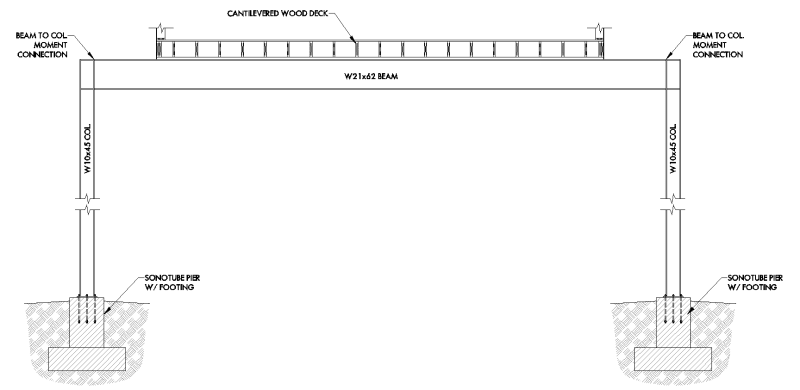bhiggins
Structural
- Oct 15, 2016
- 152
Hi Guys and Gals!
I've been tasked with designing a free-standing steel portal frame. The span is 35', height is 10', and the frame will be supporting a wood cantilevered deck and roof. The frame is not braced laterally where the beam meets column, but I am assuming the beam top flange is braced by the wood deck. The wood deck is inset roughly 4'-6" from the beam end supports. In this situation, what would the bottom flange braced length be since the supports are not braced laterally? I've attached a drawing of the proposed design:
The frame is also designed for wind loads (no seismic).

I've been tasked with designing a free-standing steel portal frame. The span is 35', height is 10', and the frame will be supporting a wood cantilevered deck and roof. The frame is not braced laterally where the beam meets column, but I am assuming the beam top flange is braced by the wood deck. The wood deck is inset roughly 4'-6" from the beam end supports. In this situation, what would the bottom flange braced length be since the supports are not braced laterally? I've attached a drawing of the proposed design:
The frame is also designed for wind loads (no seismic).

